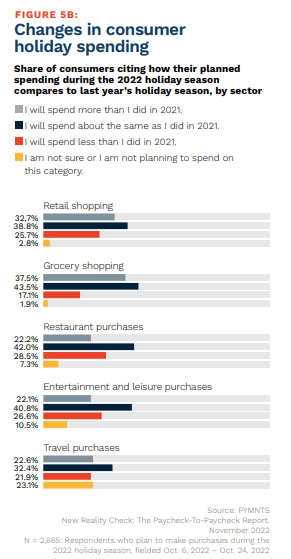Crimped Consumers Tap Their Inner Pilgrim to Fight Inflation

The bird’s likely a bit smaller. The pies, store bought.
The sides? Maybe potluck — and your aunt’s trial-and-error adventures in cranberry sauce are known for being both an error and a trial.
Thursday’s a day of thanks, and yes, it’s a day of gathering. But as we gather round the table, the table may not groan under the weight of the food as it once did.
This year we’re more frugal than we’ve had to be in a long time, in the paycheck-to-paycheck economy that demands we look for lower cost items to keep the essentials in stock.
Double Digit Inflation
The Farm Bureau estimated ahead of the holiday that Thanksgiving dinner’s average cost — for a party of 10 — was up 20% this year. The turkey’s 21% more expensive; prepared stuffing could be as much as 69% higher, sweet potatoes up 11%.
The meal offers a snapshot of a cold, hard fact of life: It costs more to satisfy that most essential of needs: the need for sustenance.
Money is finite, and since the majority of us live paycheck to paycheck — roughly 60% of us — there’s the consistent juggling act that comes when deciding where to allocate the weekly, biweekly or monthly paycheck. PYMNTS and LendingClub data show the ways in which consumers are practicing frugality, and where they see the spending shifts.
Just 17% of grocery shoppers expect to spend less on grocery purchases than in 2021, which means the vast majority see this as a significant expense which will be more, well, expensive. Just under a third of consumers say they’ll be cutting back on leisure spending and on restaurants — that means they’re freeing up cash for the more essential items.

Earnings season and commentary from the likes of Walmart and Target have shown traction in grocery and beverage purchases at these stores, as consumers find value in lower prices.
Private-label goods are generally cheaper and thus, not surprisingly, gain share of wallet. Walmart took note of the shift as early as this past spring.
The frugality is not limited to income brackets. In the company’s most recent earnings call, Walmart Chief Financial Officer John Rainey said that “we’ve continued to gain grocery market share from households across income demographics, with nearly three-quarters of the share gain coming from those exceeding $100,000 in annual income.”
The belt-tightening trends will last well beyond Thanksgiving, and stand to benefit not just the big box retailers, but Amazon, too.
As PYMNTS reported earlier in the month, the company’s “Stock Up and Save” program has offered Prime members 20% off household essentials once their cart’s tally exceeds $50. Groceries are among the most prominent category across name brand and private-label offerings.
When the Mayflower landed 402 years ago, the pilgrims disembarked and found a raft of challenges as they settled into a new reality. They’ve been painted with a broad brush as having been frugal because they needed to be.
Notwithstanding the centuries that separate us — no matter your heritage or whether you were born in the U.S. or immigrated — and the digital devices we wield to keep the larder stocked, frugality reigns again.